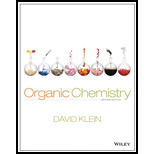Browse All Chapters of This Textbook
Book Details
Organic chemistry is not merely a compilation of principles, but rather, it is a disciplined method of thought and analysis. Success in organic chemistry requires mastery in two core aspects: fundamental concepts and the skills needed to apply those concepts and solve problems. Readers must learn to become proficient at approaching new situations methodically, based on a repertoire of skills. These skills are vital for successful problem solving in organic chemistry. Existing textbooks provide extensive coverage of, the principles, but there is far less emphasis on the skills needed to actually solve problems.
Sample Solutions for this Textbook
We offer sample solutions for Organic Chemistry homework problems. See examples below:
More Editions of This Book
Corresponding editions of this textbook are also available below:
